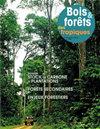Estimation of the red deer population and its impact on the Tugay forest ecosystem in the Lower Amu Darya State Biosphere Reserve, Uzbekistan
IF 0.6
4区 农林科学
Q3 FORESTRY
引用次数: 2
Abstract
In 2011, the Government of Uzbekistan established the Lower Amu Darya State Biosphere Reserve (LABR). This reserve aims to conserve the Tugay, an endangered riparian forest ecosystem straddling the main rivers of Central Asia's drylands, which is under extreme anthropogenic pressure. The LABR has reintroduced Bukhara red deer (Cervus hanglu bactrianus), a subspecies endemic to Asia whose numbers declined severely over the 20th century. The LABR development project aims to provide operational support to the Uzbek authorities for their application to join the World Network of Biosphere Reserves. GIZ (German Society for International Cooperation) requested CIRAD to provide a science-based estimate of the deer population in the LABR, using an internationally recognized method, and to issue recommendations to ensure ecologically and socio-economically sustainable management. The survey of the Bukhara red deer population began in October 2019. The study area covered 88 km2. The survey design consisted of 12 parallel straight lines 1400 m apart; the total transect length was 65 km. During the count, 127 observations of individuals or herds were made and a total of 336 individuals were observed. The data were analysed using DISTANCE 7.3 software. The encounter rates were 1.95 obs./km and 5.17 animals/km. The estimated density was 24 deer/km2 and the estimated total population was 2,112 deer [1,320 - 3,344, 95% CI]. The proportion of dead, dying or severely affected trees was roughly estimated at 10%, and the proportion of trees affected but with a good chance of survival at 15%. In the southern core area of the LABR, a very high proportion of seedlings and suckers was being eaten and the forest is no longer regenerating. Maintaining a population of 24 deer/km2 in the southern core area of LABR clearly seems incompatible with either the conservation of the Tugay forest ecosystem or the peaceful coexistence of deer with human populations adjacent to the LABR. Options to mitigate deer pressure include translocation to the northern core area of the LABR or other areas, and regulation of the deer population. The density is too high to ensure effective preservation of the species locally, although the deer population is under severe pressure in Asia as a whole.乌兹别克斯坦阿姆河下游国家生物圈保护区马鹿种群数量及其对图盖森林生态系统的影响
2011年,乌兹别克斯坦政府建立了阿姆河下游国家生物圈保护区(LABR)。该保护区旨在保护图盖森林,这是一种濒临灭绝的河岸森林生态系统,横跨中亚旱地的主要河流,处于极端的人为压力之下。美国野生动物保护协会重新引入了布哈拉马鹿(Cervus hanglu bactrianus),这是一种亚洲特有的亚种,其数量在20世纪严重下降。LABR发展项目旨在为乌兹别克斯坦当局申请加入世界生物圈保护区网络提供业务支持。德国国际合作协会(GIZ)要求CIRAD使用国际公认的方法,对LABR的鹿群数量进行科学估计,并提出建议,以确保生态和社会经济的可持续管理。对布哈拉马鹿种群的调查始于2019年10月。研究区面积为88平方公里。测量设计包括12条平行直线,相距1400米;样带总长度为65 km。在统计过程中,对个体或群进行了127次观察,共观察到336只个体。采用DISTANCE 7.3软件对数据进行分析。相遇率为1.95。/km和5.17只动物/km估计密度为24只/km2,估计种群总数为2,112只[1320 ~ 3,344,95% CI]。死亡、垂死或严重受影响的树木的比例大致估计为10%,受影响但有良好生存机会的树木的比例为15%。在LABR南部核心区,树苗和吸盘被吃掉的比例非常高,森林不再再生。在拉布拉多保护区南部核心区保持24只鹿/km2的数量显然与保护图盖森林生态系统以及拉布拉多保护区附近鹿群与人类种群的和平共处都是不相容的。缓解鹿群压力的方法包括将鹿群迁移到北部的核心地区或其他地区,以及对鹿群数量进行调控。尽管整个亚洲的鹿群都面临着严重的压力,但由于密度太高,无法确保该物种在当地得到有效保护。
本文章由计算机程序翻译,如有差异,请以英文原文为准。
求助全文
约1分钟内获得全文
求助全文
来源期刊

Bois et Forets Des Tropiques
FORESTRY-
CiteScore
1.50
自引率
16.70%
发文量
31
审稿时长
>12 weeks
期刊介绍:
In 1947, the former Tropical Forest Technical Centre (CTFT), now part of CIRAD, created the journal Bois et Forêts des Tropiques. Since then, it has disseminated knowledge and research results on forests in intertropical and Mediterranean regions to more than sixty countries. The articles, peer evaluated and reviewed, are short, synthetic and accessible to researchers, engineers, technicians, students and decision-makers. They present original, innovative research results, inventions or discoveries. The journal publishes in an international dimension. The topics covered are of general interest and are aimed at an informed international audience.
 求助内容:
求助内容: 应助结果提醒方式:
应助结果提醒方式:


